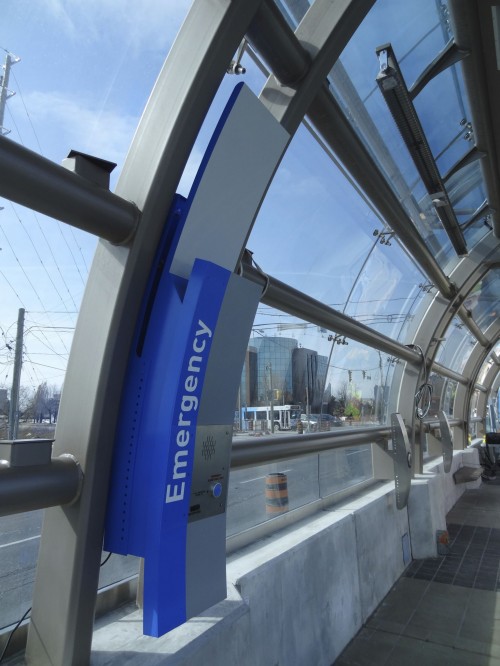
Entro designed emergency call boxes and other components with curved elements, so they could conform to the curved glass walls.
As such, this was one of the cases where equipment could not be mounted directly to the curved glass. Instead, it was designed to be attached to an adjustable steel post system, which in turn was mounted to a concrete knee-wall, with sufficient turning radius for passengers in wheelchairs. The heights and spacing of button controls were also specified with accessibility requirements in mind.
Finally, fare machines are often subject to vandalism and breakdowns, so maintenance would be an important consideration. The VivaNext fare equipment had to be durable but also serviceable, which called for ease of uninstallation and removal to allow for on-site replacement and off-site maintenance. The post system on which the machines are mounted was designed with this flexibility in mind.
After Entro completed the industrial and graphic design of the machines, they were fabricated by Cubic, which is headquartered in San Diego, Calif., and operates a Canadian regional transportation systems office in Concord, Ont.
Guarding the brand
Having completed work for both the original QuickStart project and the ongoing VivaNext phases, Entro has become Viva’s ‘brand guardian’ of sorts, continually consulted to ensure the system’s visual identity and equipment designs are applied consistently across various elements of the built environment.
The first dedicated busways are now active along Highway 7 in Richmond Hill and Markham, Ont. Future sections are under construction and/or planned in Vaughan and Newmarket, Ont., over the next five years.
Vincent Matthieu Gratton is an associate for Entro. For more information, contact him via e-mail at vincent@entro.com.





